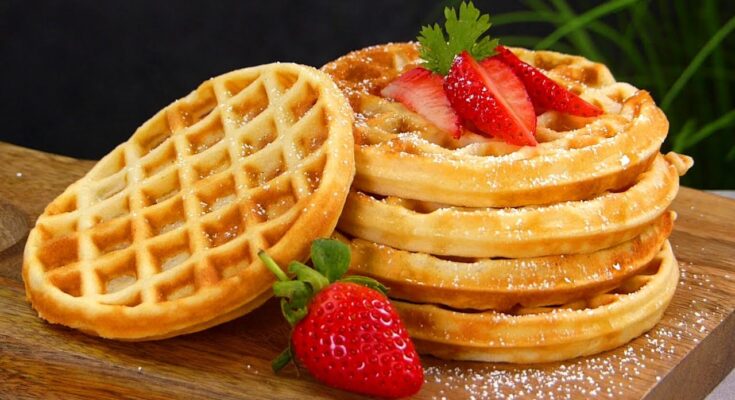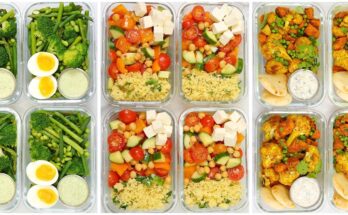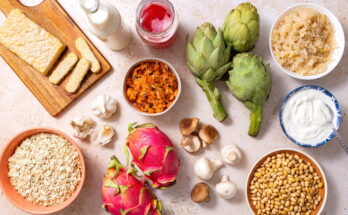Homemade Waffle Recipe: There’s something magical about biting into a fresh, golden-brown waffle—crispy on the outside, soft and fluffy on the inside. Making waffles from scratch at home not only brings comfort but also gives you full control over flavor and texture. Whether you’re preparing breakfast for your family, treating yourself on a Sunday morning, or impressing guests with a homemade brunch, this step-by-step guide will walk you through crafting the perfect waffles with ease and confidence.
Let’s face it, store-bought waffle mixes just don’t cut it. They lack flavor, freshness, and often include unnecessary preservatives. In contrast, homemade waffles are tailor-made to your taste and dietary preferences. You get to choose the ingredients, the toppings, and the portion size. Plus, the smell of waffles cooking in your kitchen? Absolutely unbeatable.
In this guide, we’ll cover everything—from the ingredients you need to foolproof techniques that make your waffles restaurant-worthy. You’ll learn not just how to make waffles, but how to master them. We’ll also dive into pro tips, common mistakes to avoid, and ideas to personalize your waffles for every occasion.
So grab your apron, heat up that waffle iron, and get ready to learn how to make the most mouthwatering waffles ever. Whether you’re a beginner or a kitchen pro, this guide has you covered.
Why Homemade Waffles Are Better
Homemade waffles offer a world of flavor, freedom, and freshness you just can’t get from a box. First of all, you get to customize every part of the recipe—use whole wheat flour for a healthy twist, almond milk for a dairy-free option, or even add a splash of vanilla or cinnamon for an extra kick. You’re the chef, and the possibilities are endless.
Not only that, but homemade waffles are free of preservatives and artificial flavors that often sneak their way into packaged mixes. When you make waffles from scratch, every bite is clean, real, and made with love. That’s something no frozen waffle can replicate.
Plus, let’s not ignore the economics. Making waffles at home is far cheaper in the long run. A single box of mix might give you 8–10 waffles, but the same money can get you ingredients for 25 or more homemade ones. That’s not just better food—it’s smarter spending.
Lastly, the experience is half the joy. Cooking waffles with family or friends creates memories. Let the kids pour the batter. Let your partner pick the toppings. It becomes more than breakfast; it becomes a tradition.
What Makes a Perfect Waffle
A perfect waffle strikes the balance between crispiness and fluffiness. It’s golden brown with a slight crunch on the outside, while the inside stays light and tender. Achieving that magic combo isn’t luck—it’s all about the right ingredients and cooking technique.
First, let’s talk texture. Baking powder is essential for the rise and fluffiness, while eggs add structure and richness. Whipping the egg whites separately and folding them into the batter is a secret many seasoned waffle makers use. It adds that cloud-like texture inside.
The flour you choose matters too. All-purpose flour is the go-to, but experimenting with oat or whole wheat can give a unique texture and flavor. Just make sure not to overmix the batter—overworking it can make the waffles tough.
As for flavor, ingredients like vanilla extract, melted butter, or even a pinch of cinnamon can elevate your waffle game. And don’t forget salt! It balances the sweetness and brings out the flavors.
Lastly, the cooking time and temperature must be just right. Too low and the waffle becomes limp; too high and you risk burning it before it’s cooked through. Trust your waffle iron’s indicator, and resist the urge to peek too soon!
Essential Ingredients for Waffles
Dry Ingredients You’ll Need
Creating the perfect waffle begins with getting the dry ingredients right. These are the building blocks of your batter, so their quality and proportions make all the difference.
Here’s what you’ll typically need:
- 2 cups of all-purpose flour (or substitute with oat flour for a healthier twist)
- 2 tablespoons of sugar
- 1 tablespoon of baking powder
- ½ teaspoon of salt
The flour forms the structure, while sugar adds that touch of sweetness. Baking powder is your leavening agent—it helps the waffles puff up beautifully, making them airy and light. Don’t skip the salt; it enhances every other flavor in the mix.
Want to get adventurous? You can add dry spices like cinnamon, nutmeg, or even a bit of cocoa powder for chocolate waffles. Just be cautious with quantities—start small and taste as you go.
Always sift your dry ingredients together in a large mixing bowl. This helps prevent clumps and ensures everything is evenly distributed. It’s a simple step, but it guarantees a smoother, more uniform batter, which directly affects the texture of your waffles.
Buying good-quality flour and keeping your dry ingredients fresh also makes a noticeable difference. Old baking powder, for instance, can lead to flat, dense waffles.
Wet Ingredients for Fluffy Perfection
Wet ingredients are the soul of your waffle batter. They bring moisture, flavor, and help everything come together into a creamy, pourable consistency that cooks beautifully on a hot waffle iron.
Here’s what you’ll need:
- 2 large eggs (separate yolks and whites for fluffier waffles)
- 1¾ cups of milk (whole milk for richness or plant-based milk for dairy-free)
- ½ cup of melted butter or oil
- 1 teaspoon of vanilla extract (optional but recommended)
Start by mixing the egg yolks with the milk and butter. This creates a rich, creamy base. If you want ultra-fluffy waffles, beat the egg whites separately until stiff peaks form and fold them into the batter at the end. This little trick adds serious lift and makes each bite feel like eating a cloud.
Butter adds flavor and helps the waffles crisp up in the iron. If you’re avoiding dairy, go for coconut oil or even olive oil for a unique twist. Vanilla extract, while optional, adds a lovely aroma and depth of flavor.
Make sure all your wet ingredients are at room temperature. Cold eggs or milk can re-solidify the melted butter, creating lumps in the batter. Keep it smooth for the best results.
Equipment You’ll Need
Waffle Iron Essentials
A good waffle iron is the heart of the operation. Without it, you’re not making waffles—you’re making pancakes in disguise. There are a few types of waffle irons out there, and choosing the right one makes a big difference in the final product.
Let’s break down the main types:
- Classic American Waffle Irons: These produce thinner, crispier waffles with smaller pockets—ideal for quick breakfasts.
- Belgian Waffle Irons: These have deeper grids, making fluffier waffles with big pockets perfect for syrup, fruit, and whipped cream.
- Flip Models: These rotate 180 degrees to spread the batter evenly, leading to consistent browning and a great texture.
When shopping for a waffle iron, look for features like non-stick plates (saves you cleanup time), adjustable temperature controls, and a ready indicator light. Some advanced models even have audible alerts when the waffle is done—no more guessing or burning.
Cleaning is another big factor. Removable plates make things easier, but at minimum, a non-stick surface should prevent batter from welding itself to the iron. Never use metal utensils to remove waffles, as they can scratch the coating and reduce the lifespan of your machine.
And if you already have a waffle iron gathering dust in a cabinet—pull it out, clean it up, and get ready to use it. You might be surprised how good it still works!
Optional Tools to Improve the Process
While a waffle iron is non-negotiable, a few other kitchen tools can elevate your waffle-making game to the next level. They aren’t required, but they sure make life easier and your waffles tastier.
Here are some extras to consider:
- Mixing Bowls: At least two—one for dry and one for wet ingredients. A third bowl is useful if you’re whipping egg whites separately.
- Whisk or Electric Mixer: For a smooth, lump-free batter and perfectly whipped egg whites.
- Measuring Cups and Spoons: Accurate measurements mean consistent waffles every time.
- Ladle or Batter Dispenser: Pouring batter into the waffle iron can get messy fast. A ladle or squeeze bottle helps you hit the sweet spot without overflow.
- Cooling Rack: If you’re making a batch and don’t want them to get soggy, set cooked waffles on a cooling rack so air circulates and keeps them crisp.
- Tongs or Silicone Spatula: To remove waffles gently without scratching the surface of your iron.
If you’re serious about brunch or love batch cooking, you might even invest in a double waffle iron. This lets you cook two waffles at once, cutting your time in half. Handy if you’re feeding a crowd or just can’t wait for seconds.
Step-by-Step Instructions to Make Homemade Waffles
Step 1: Prepping Your Ingredients
Before diving into mixing and cooking, take a few minutes to organize your kitchen. Prepping everything beforehand—also known as mise en place—saves time and prevents disasters halfway through.
First, take out all your ingredients and check that you have the right amounts. It’s frustrating to start only to realize you’re out of eggs or baking powder. Let cold ingredients like milk and eggs come to room temperature. This helps them blend more easily into the batter and gives you a smoother, more cohesive mix.
Next, sift together all your dry ingredients in one bowl. This step ensures even distribution and removes any clumps, especially if your flour has been sitting for a while. In a separate bowl, whisk together your egg yolks, milk, melted butter, and vanilla extract.
If you’re going the extra mile, whip your egg whites now. Use a clean, dry bowl and beat the whites until they form stiff peaks. This will be folded into the batter at the end to make the waffles extra airy and fluffy.
Having everything ready before you start cooking means you can move quickly and smoothly through the process, without overmixing or letting your waffle iron sit idle and overheat.
Step 2: Mixing the Batter
Once your ingredients are prepped, it’s time to bring them together into the magic mixture that becomes waffles. Start by gradually adding your wet mixture into your dry ingredients. Use a whisk or spatula to combine them until just blended. Don’t overmix! A few small lumps are totally fine—in fact, they’re desirable. Overworking the batter leads to dense, chewy waffles instead of light, airy ones.
Now, if you’ve whipped the egg whites separately, it’s time to gently fold them in. Use a spatula to scoop from the bottom and fold over the top in a figure-eight motion. This incorporates the whites without deflating them. Take your time and be gentle. The fluffier the batter, the fluffier the waffle.
Once the batter is mixed, let it sit for about five minutes. This resting period helps the gluten relax and gives the baking powder time to activate. You’ll notice the batter thicken slightly, which makes it easier to portion and prevents it from running everywhere in the waffle iron.
Your batter is now ready, and so are you. Preheat your waffle iron and get ready for some serious kitchen magic.
Step 3: Heating the Waffle Iron
Preheating your waffle iron is a step you cannot skip. A cold or lukewarm iron won’t cook the batter properly, leading to soggy, pale waffles that stick and tear apart. A properly preheated waffle iron gives you that golden crust and satisfying crunch on the outside.
Turn on your waffle iron and let it heat up for at least five minutes. Most models have a ready light or indicator to let you know it’s good to go. If yours doesn’t, test it by flicking a drop of water onto the surface—if it sizzles and evaporates instantly, it’s hot enough.
While it heats, lightly grease the iron with a non-stick spray or a brush of melted butter. This is especially important if your waffle iron isn’t non-stick or if it’s seen better days. Don’t use too much oil, though—excess can make the waffles greasy and heavy.
Resist the temptation to pour batter in too early. You only get one chance at that perfect first impression, and you want the heat to do its job right from the start. Trust the process. Your patience will pay off.
Step 4: Pouring the Batter and Cooking
This is where the magic happens. With your waffle iron hot and your batter rested, it’s time to get cooking. Start by opening your waffle maker and carefully ladling in the batter. Pour just enough to cover the bottom plate—usually about ¾ to 1 cup depending on the size of your iron.
Don’t overfill! It might seem like more batter will make a thicker waffle, but it usually results in a messy overflow that’s tough to clean. You want the batter to spread naturally as the iron closes.
Once the batter is in, close the lid and don’t open it until the waffle is done. This part requires a bit of patience and trust. Most waffle irons come with an indicator light or a timer, so rely on that. If your iron doesn’t have one, a good rule of thumb is to wait 3–5 minutes.
You’ll know it’s ready when steam stops escaping from the sides. That’s a key sign the moisture has cooked out and the waffle has crisped up. Gently open the lid—if it resists, give it another minute. Forcing it can rip the waffle.
Use tongs or a silicone spatula to lift the waffle out. It should be golden brown, with slightly darker edges and a soft, fluffy interior.
Transfer it to a cooling rack—not a plate! Plates trap steam underneath, which makes the bottom soggy. If you’re serving a batch, place them in a warm oven (around 200°F or 95°C) to keep them hot and crispy.
Step 5: Serving and Topping Ideas
Now comes the best part—topping your waffles and diving in! Waffles are a blank canvas for all kinds of delicious combinations. Whether you’re a sweet tooth or prefer something savory, there’s a waffle topping for everyone.
Here are some classic and creative ideas:
Sweet Toppings:
- Maple syrup and butter (the OG combo)
- Fresh berries with whipped cream
- Banana slices with peanut butter and honey
- Nutella with chopped hazelnuts
- Greek yogurt and granola
- Caramel sauce with apple slices and cinnamon
Savory Toppings:
- Fried chicken and hot sauce (Southern-style favorite)
- Scrambled eggs and cheddar cheese
- Avocado with a poached egg and chili flakes
- Smoked salmon, cream cheese, and capers
- Ham and melted Swiss cheese
You can also try dessert-style waffles—think a scoop of vanilla ice cream, chocolate chips, crushed cookies, or even s’mores toppings with mini marshmallows and graham cracker crumbs.
Want to make it a meal? Serve your waffles with a side of bacon, sausage, or a fresh fruit salad. And don’t forget drinks—freshly brewed coffee, orange juice, or a mimosa for brunch vibes.
Whether you’re going sweet or savory, presentation matters. Stack ‘em up, drizzle generously, sprinkle artistically, and get that Instagram shot. After all, you made these beauties from scratch—show them off!
Tips and Tricks for the Best Waffles
Making Them Extra Crispy or Extra Fluffy
Want your waffles to turn out exactly how you like them every single time? Here’s how to fine-tune your recipe for either crispy or fluffy perfection.
For Extra Crispy Waffles:
- Add a tablespoon of cornstarch to the dry ingredients. It helps create that crackly crust.
- Use a higher-fat milk (like whole milk or buttermilk) and real butter.
- Cook on high heat. A hot iron locks in crispiness fast.
- Don’t stack hot waffles—lay them in a single layer to prevent steam from making them soggy.
For Extra Fluffy Waffles:
- Separate the eggs and whip the whites into stiff peaks, then fold them into the batter.
- Add an extra teaspoon of baking powder or ¼ teaspoon of baking soda (if using buttermilk).
- Let the batter rest for 5–10 minutes before cooking to activate the leavening agents.
Either way, make sure not to overmix the batter. It’s tempting to go for a perfectly smooth mix, but a few lumps mean the gluten hasn’t been overworked—which is what you want.
How to Avoid Common Mistakes
Even experienced cooks mess up waffles now and then. Avoiding a few simple errors can make your waffle game consistently strong.
Mistake #1: Overfilling the Waffle Iron
Too much batter leads to messy overflow and uneven cooking. Stick to the recommended amount for your waffle iron model.
Mistake #2: Opening the Iron Too Early
This one’s tough. You want to peek, but don’t. Opening too soon tears your waffle apart. Wait until the steam slows down or the light goes off.
Mistake #3: Not Preheating the Iron
A cold waffle iron equals undercooked, pale waffles. Always let it fully preheat before adding batter.
Mistake #4: Using Cold Ingredients
Cold milk or eggs can firm up melted butter, creating lumps and uneven texture. Let everything come to room temp first.
Mistake #5: Skipping the Clean-Up
Leftover batter or crumbs can burn and stick during your next batch. Clean your waffle iron gently with a damp cloth and soft brush—no soap unless the manufacturer recommends it.
By mastering these common pitfalls and tweaking your recipe to your taste, you’ll never look at a box mix again. Homemade waffles will become your go-to for lazy mornings, weekend brunches, or whenever you need a little joy on a plate.
FAQs about Homemade Waffle Recipe
1. Can I make waffle batter ahead of time?
Yes, you can prepare waffle batter in advance and store it in the refrigerator for up to 24 hours. Just give it a gentle stir before using to ensure even consistency.
2. What’s the difference between waffle and pancake batter?
Waffle batter typically has more fat (like butter or oil) and sugar than pancake batter, making waffles crispier and richer. Pancakes are softer and fluffier.
3. How do I make waffles extra crispy?
For extra crispy waffles, use a bit more oil or butter in the batter and cook them until golden brown. Using cornstarch in the dry mix also helps achieve a crunchier texture.
4. Can I freeze homemade waffles?
Absolutely! Let the waffles cool completely, then place them in a freezer-safe bag. To reheat, pop them in a toaster or oven until hot and crispy.
5. Do I need a waffle iron to make waffles?
Yes, a waffle iron is essential for making traditional waffles. It gives them their iconic shape and texture. However, some creative cooks use grill pans as an alternative.
6. What are the best toppings for homemade waffles?
Classic toppings include fresh berries, maple syrup, whipped cream, butter, honey, and even fried chicken for a savory twist.
7. Can I make waffles without eggs?
Yes, you can substitute eggs with mashed bananas, applesauce, yogurt, or commercial egg replacers for an egg-free waffle recipe.
8. Why are my waffles sticking to the iron?
Waffles may stick if your waffle iron isn’t hot enough or not properly greased. Always preheat and lightly oil the plates before pouring in the batter.
Conclusion
Homemade waffles are more than just breakfast—they’re an experience. With a simple list of ingredients, a reliable waffle iron, and a bit of patience, you can create waffles that rival any restaurant or diner. The smell alone is worth it, but the taste? Next level. Whether you’re feeding your family, hosting brunch, or just treating yourself, these waffles are guaranteed to impress.
Remember to experiment with toppings, adjust your crisp-to-fluff ratio, and most importantly, have fun with it. Cooking should be joyful, and few dishes bring smiles faster than warm, golden waffles made from scratch.



